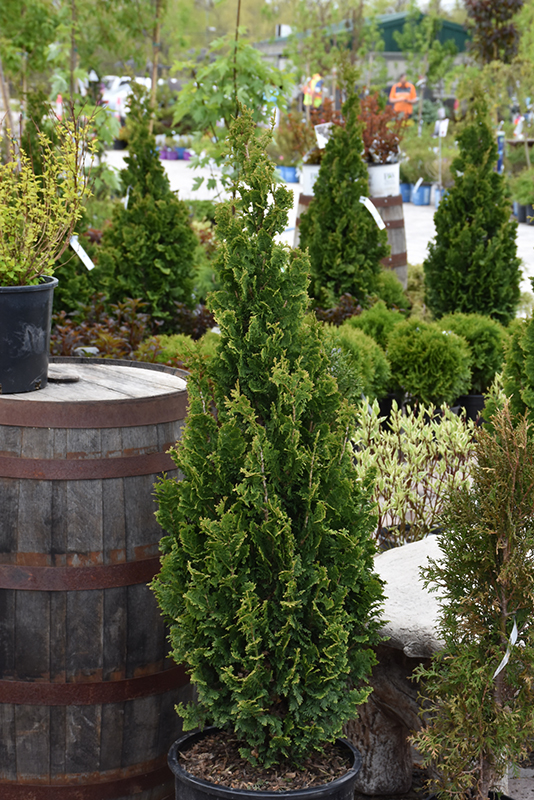Plant Finder
Zmatlik Arborvitae
Thuja occidentalis 'Zmatlik'
Height: 15 feet
Spread: 4 feet
Sunlight:
![]()
![]()
Hardiness Zone: 3
Other Names: Eastern White Cedar
Brand: Iseli Nursery
Description:
A narrow, columnar evergreen tree with medium green foliage that becomes an intense plum-bronze in winter; makes an excellent articulation tree or tall hedge; hardy and heat tolerant, takes pruning well; best with some sun, protect from drying winds
Ornamental Features
Zmatlik Arborvitae is primarily valued in the landscape for its rigidly columnar form. It has attractive green evergreen foliage. The scale-like sprays of foliage are highly ornamental and turn plum purple and coppery-bronze in the fall, which persists throughout the winter.
Landscape Attributes
Zmatlik Arborvitae is a multi-stemmed evergreen tree with a narrowly upright and columnar growth habit. Its average texture blends into the landscape, but can be balanced by one or two finer or coarser trees or shrubs for an effective composition.
This is a relatively low maintenance tree. When pruning is necessary, it is recommended to only trim back the new growth of the current season, other than to remove any dieback. It has no significant negative characteristics.
Zmatlik Arborvitae is recommended for the following landscape applications;
- Vertical Accent
- Hedges/Screening
Planting & Growing
Zmatlik Arborvitae will grow to be about 15 feet tall at maturity, with a spread of 4 feet. It has a low canopy with a typical clearance of 1 foot from the ground, and is suitable for planting under power lines. It grows at a medium rate, and under ideal conditions can be expected to live for 50 years or more.
This tree does best in full sun to partial shade. It prefers to grow in average to moist conditions, and shouldn't be allowed to dry out. This plant does not require much in the way of fertilizing once established. It is not particular as to soil type or pH. It is somewhat tolerant of urban pollution, and will benefit from being planted in a relatively sheltered location. Consider applying a thick mulch around the root zone in winter to protect it in exposed locations or colder microclimates. This is a selection of a native North American species.
A NetPS Plant Finder tool


